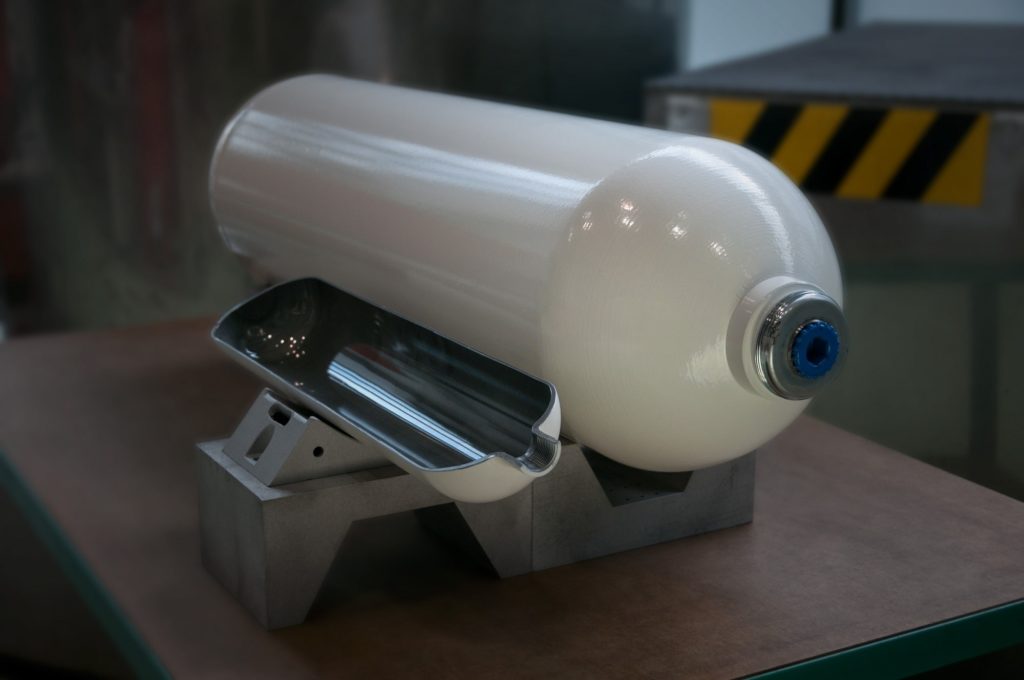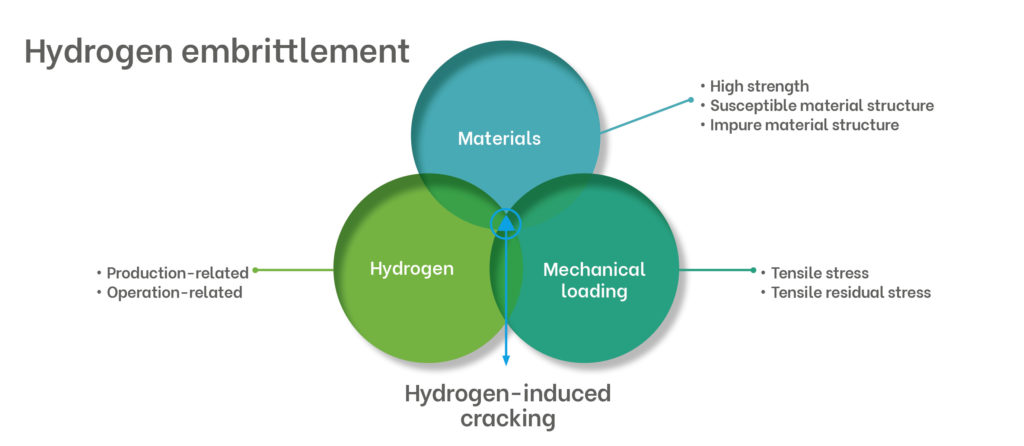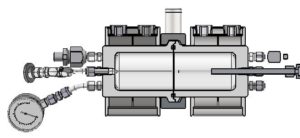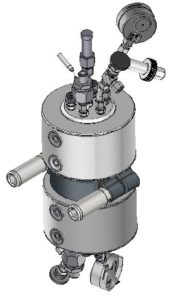Surface treatment to reduce hydrogen diffusion in steel tanks
Salzgitter Mannesmann Forschung GmbH and the Fraunhofer IST are developing surface treatments as protection against hydrogen embrittlement in ultra-high-strength Type I tanks. The barrier layer is intended to prevent the absorption of hydrogen into the steel material.
Motivation and definition of objectives
Despite very good recyclability, low material prices and economical manufacturing processes, the utilization of steel tanks is currently limited. The reasons for this are the high inherent weights and the tendency of ultra-high-strength steel grades towards hydrogen embrittlement.
The research objective of the project is therefore the development of a hydrogen barrier for tanks made from ultra-high-strength steel tubes. The utilization of these materials enables a reduction in the wall thickness and consequently offers the potential to reduce weight, costs and CO2 emissions.
Approach
The Fraunhofer IST is identifying, testing and evaluating potential surface treatments for preventing hydrogen embrittlement. These encompass both surface coatings and modifications which act as a barrier, thereby reducing hydrogen uptake and diffusion.
Salzgitter Mannesmann Forschung is developing a testing device for measuring hydrogen permeation and is verifying the effectiveness of the coating as a hydrogen barrier.
Literature research
Potential surface treatments:
- Galvanic Zi-Ni coatings exhibit low hydrogen diffusion
- Oxide and nitride modifications of Al, Ti and Cr show permeation values which are lower by two orders of magnitude
The following coating properties have a strong influence on permeation:
- Carbide-to-metal ratio
- Structure of the layer (roughness, morphology, grain size)
- Layer thickness
Hydrogen permeation
In the pressure chamber, the gaseous hydrogen is pressed against the disk-shaped material sample at up to 200 bar. On the opposite side is the measuring cell, which detects the escaping hydrogen. In addition, the sample can be elastically loaded, as this can have an influence on the hydrogen absorption. In this way, the penetration of hydrogen from the gas phase can be determined in a steel sample under conditions such as those in a high-pressure tank. The first step is to set up the test apparatus and establish the methodology. The measurement of coated samples makes it possible to determine the barrier effect.
Contact
Each partner of the consortium acts in its own name until the Wasserstoff Campus Salzgitter e.V. has been founded.
Wasserstoff Campus Salzgitter
on the premises of Robert Bosch Elektronik GmbH
John-F.-Kennedy-Str. 43 – 53
38228 Salzgitter
Allianz für die Region GmbH
Frankfurter Straße 284
38122 Braunschweig
Phone +49 531 1218-0
Contact
Fraunhofer-Institut für Schicht- und Oberflächentechnik IST
Bienroder Weg 54 E
38108 Braunschweig
Phone +49 531 2155-0
Contact
Salzgitter AG
Eisenhüttenstraße 99
38239 Salzgitter
Phone +49 5341 21-01
Contact
Alstom Transport Deutschland GmbH
Linke-Hofmann-Busch-Straße 1
38239 Salzgitter
Phone +49 5341 9000
Contact
MAN Energy Solutions SE
Stadtbachstraße 1
86153 Augsburg
Telefon +49 821 322-0
Contact
Stadt Salzgitter
Joachim-Campe-Straße 6 – 8
38226 Salzgitter
Phone +49 5341 839-0
Contact
Amt für regionale Landesentwicklung
Friedrich-Wilhelm-Straße 3
38100 Braunschweig
Phone +49 531 484-1002
Contact
Robert Bosch Elektronik GmbH
John-F.-Kennedy-Straße 43
38228 Salzgitter
Phone +49 531 2850
Contact
WEVG Salzgitter GmbH & Co. KG
Albert-Schweitzer-Straße 7-11
38226 Salzgitter
Phone +49 5341 408-216/-269
Contact




